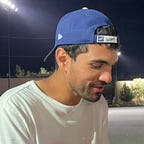The History of Silicon Valley — A Brief Summary (Part 1/3)
Interestingly, I’ve found most successful founders have a deep appetite for history:
- In the book “Hard Drive: Bill Gates and the Making of the Microsoft Empire”, biographers James Wallace and Kim Erickson said Gates would “consume a number of biographies — Franklin Roosevelt’s and Napoleon’s, among others — to understand, he said, how the great figures of history thought.”
- In her book “The Billionaire and the Mechanic”, Julian Guthrie writes “Larry [Ellison] was a voracious reader who spent a great deal of time studying science and technology, but his favorite subject was history. He learned more about human nature, management, and leadership by reading history than by reading books about business.”
- In Mark Zuckerberg’s book section of his Facebook profile, he lists “Sapiens: A Brief History of Humankind” among his favorites, along with several biographies such as “The House of Rothschild.”
- In the documentary “Steve Jobs: Visionary Entrepreneur,” his interviewer, John McLaughlin, says of Jobs, “I was amazed to find out how knowledgeable Steve Jobs was about Silicon Valley and where it came from.”
- Two of the books Elon Musk mentioned on Twitter are biographies : “Benjamin Franklin: An American Life,” and “Catherine the Great: Portrait of a Woman.”
This isn’t surprising. Learning about the past teaches us a lot about ourselves and our future.
“Those who do not learn from history class are doomed to repeat it.” — Some guy on Reddit
Therefore, I decided to summarize the history of Silicon Valley in three short posts. I’m sure many founders out there will drive valuable lessons.
So, grab a cup of your favorite beverage (I’ll have coffee), sit back, and enjoy this short trip to the past…
1849: A Gold Rush that’s been going on for 170 years
The Gold Rush of 1849 brought legions of people to California.
One person was Leland Stanford. A businessman who made his fortune selling picks and shovels to gold miners. In 1862, he went on to become the 8th Governor of California.
In 1884, Stanford’s only son, Leland Stanford Jr., died of typhoid fever right before his 16th birthday.
This tragedy devastated Stanford and his wife, Jane Lathrop.
To honor their son, they decided to spend their entire fortune on building a university. A place that would strive to teach practical knowledge.
In 1885, Stanford University opened its doors.
… And tuition was free in the early years!
Fred Terman: The father of Silicon Valley
Side note: Back then, the area wasn’t called “Silicon Valley.” Its main attraction were the beautiful fruit trees along the roads. So the area was called “The Valley of Heart’s Delight.” (Aww!)
One of Stanford’s graduates was Frederick Terman, who later left to MIT to get a ScD in electrical engineering.
In 1925, Terman returned to Stanford and became a member of its Engineering Faculty.
Terman designed a course, created a vacuum tube laboratory, wrote one of the most important books on electrical and radio engineering, and became Dean of the School of Engineering after WWII.
Arguably though, his greatest achievement was encouraging his students to stay in California and build their companies. Also, he invested in them.
Why do I think this is his greatest achievement? Because his students built some pretty impressive companies:
- In 1939, Bill Hewlett and Dave Packard founded their company by setting up shop in Packard and his wife, Lucille’s, garage. They made their partnership official by investing $538 and flipping a coin to choose the name Hewlett-Packard. One of their first products was an audio oscillator sold to Walt Disney for the making of the film “Fantasia (1940).”
- The Varian brothers, Russell and Sigurd, founded Varian Associates in 1948. They developed the top-secret Klystron tube, which could amplify electromagnetic waves at microwave frequencies. What does this mean? That it was installed on England’s fighter planes to locate and destroy over 90%(!!) of enemy Nazi u-boats in the Atlantic. This allowed for American troops to be transported to England for the D-Day invasion.
Fun little fact: Varian Associates also hired a young bookkeeper by the name of Clara Jobs (mother of Steve Jobs).
Stanford University’s entrepreneurial policies (led by Fred Terman), the end of WWII, the successes of Bill Hewlett, Dave Packard and the Varian Brothers (and of course the amazing climate), became the fertile soil on which the Silicon Valley garden would grow.
End of Part 1
NEXT → The History of Silicon Valley — A Brief Summary (Part 2/3)
Thanks for reading! 😊If you enjoyed it, test how many times can you hit 👏 in 5 seconds. It’s great cardio for your fingers AND will help other people see the story.You can follow me on Twitter at @richardreeze to find out whenever others just like it come out.📚 Do you like books? If so you might enjoy my latest obsession:
Most Recommended Books.📚
